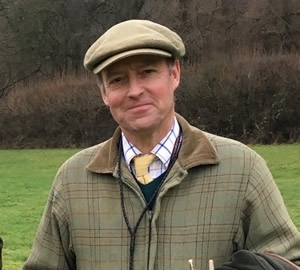 The GWCT has always advised potential Grey partridge enthusiasts, that to really have a chance of succeeding in producing a viable, self-sustaining wild population of this bird, you need at least a 1000 acres of mixed or arable farmland without too much woodland. Ideally, one really needs more farmland than this and it also needs to be in a good block and not a long thin piece of ground. It might sound picky, but preferably the ground should also be towards the “lighter” end of the soil spectrum too, so that it is relatively free draining. Greys don’t much like heavy, claggy ground!
The GWCT has always advised potential Grey partridge enthusiasts, that to really have a chance of succeeding in producing a viable, self-sustaining wild population of this bird, you need at least a 1000 acres of mixed or arable farmland without too much woodland. Ideally, one really needs more farmland than this and it also needs to be in a good block and not a long thin piece of ground. It might sound picky, but preferably the ground should also be towards the “lighter” end of the soil spectrum too, so that it is relatively free draining. Greys don’t much like heavy, claggy ground!
There have been many occasions that I have told “Grey partridge enthusiasts” this, only to watch the eagerness slowly drain from their faces.
But this was not the case with George Ponsonby who farms near Lechlade in Gloucestershire, when I said this to him a number of years ago. His own farm is well under a 1000 acres and is also relatively wooded in parts with quite heavy ground. He does however have a small part of the farm on lighter ground, which is also suitably open and did hold an occasional pair or two of Greys.
George’s response was “well, I will just have to acquire more ground won’t I!”. I drove away thinking that this would be easier said than done – but I had not quite got the measure of George!
Slowly but surely, George has acquired five more farms immediately adjoining his own, all on contract farming agreements, and on each occasion has negotiated the shooting rights as well – he now farms 4,500 acres of which 2,000 acres is immediately around his own farm which means he has well over the required thousand acres of suitable Grey partridge ground needed. He makes sure that as part of the deal, he can organise the conservation on the farms he oversees, putting in wild bird mixes, wild flower mixes, brood rearing habitat and over-wintering stubbles.
Also, George decided that he really had to bite the bullet and take on a full time “wild bird keeper” across the ground, otherwise he would never be able to achieve his goal of being able to harvest a few wild greys from a sustainable population.
So, George was joined last year by Frank Snudden, an experienced wild grey partridge keeper who has immediately started to make a difference, concentrating his efforts on a core 2,000 acres; George now has two other neighbours contemplating joining in the fun as well.
It is early days, but already some good sized coveys have been seen this winter and I see no reason at all why George cannot fulfil his wish to fly wild Greys over a line of guns in a few years’ time. Last year they had a spring count of 19 pairs. This was followed by the most superb weather in June (which won’t happen every year of course) and the autumn count was well over 100 – in fact, they were shooting pheasants recently and the beaters flushed more than 8 large coveys of greys either over the guns or just wide of them. It was a tremendous sight.